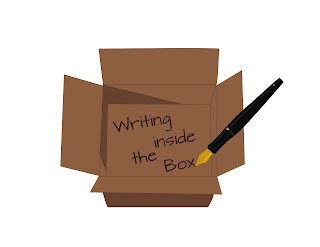Ernest Hemingway
It's not a good idea to put your wife into a novel; not your latest wife anyway.
Norman Mailer
For me, the plot idea is what comes first. As I mentioned in a previous entry, the plot used to be where I stopped my development. But plot-driven novels fall flat. My writings were over quickly and lacked interconnectivity.
If you tend to write the plot-driven, do not fear. Plot and Character are forever linked: Eudora Welty explains, “Plot is a device organic to human struggle designed for the searching out of human truth” (99), a journey directed by the plot, perhaps, but taken by the characters. “What can a character come to know, of himself and others, by working through a given situation?” Welty asks (98). Again, this points to the significance of the plot, but also to the characters. They make or miss the discovery so that we, the readers, can too.
“Characters in the plot connect us with the vastness of our secret life, which is endlessly explorable” (Welty 9). This quote, I feel, hits the core: without the characters, the readers will have no connection—to the plot, to the discovery of truth, or to themselves.
Characters feel and think, know and wonder, suffer and love, trudge and skip—just as we all do through life. Well-crafted characters erase the boundary of the page and take the form of reality in the mind of the reader.
And how does one create a well-crafted character? I have found two helpful keys. First of all, the elements of character need to be explored. Considering these elements will help your character do more than just walk and talk.
But I am not able to always completely make up these elements for my fictional characters, so I borrow, elaborate, and shape qualities from people I actually know when I am writing. My friend and artist Melinda Dabbs said this wasn’t something to look down upon; she compared me to a portrait artist. Sometimes my characters are more obviously like another person than others. But, for myself, this shading of reality into my fiction makes my characters believable and relatable—and therefore my writing full of life.
Possible Writing Challenge
1) Take a picture of a random person, and write a character sketch: a brief short story that highlights and exposes a created character including appearance and nature.
2) Pick a character from a piece of writing and describe his or her three main characteristics, using examples from the story to support your claims.
Hemingway, Ernest. “Novel.” n.d. Brainyquotes.com. 30 March 2011 <http://www.brainyquote.com/quotes/keywords/novel.html>.
Mailer, Norman. “Novel.” n.d. Brainyquotes.com. 30 March 2011 <http://www.brainyquote.com/quotes/keywords/novel.html>.
Welty, Eudora. On Writing. New York: The Modern Library, 2002.
Ten Characters I Love or Hate or Both (You Decide)
1) Scarlett O’Hara Gone with the Wind Mitchell
2) Howard Roark The Fountainhead Rand
3) Undine Spragg Custom of the Country Wharton
4) Gloria Patch The Beautiful and the Damned Fitzgerald
5) Ruby Turpin “Revelation” O’Connor
6) Squealer Animal Farm Orwell
7) Jim Burden My Antonia Cather
8) Edna Pontellier The Awakening Chopin
9) Romeo Romeo and Juliet Shakespeare
10) Hamlet Hamlet Shakespeare
Thanks to Whitnee Webb for designing my Elements of Character visual.
Thanks to Whitnee Webb for designing my Elements of Character visual.





